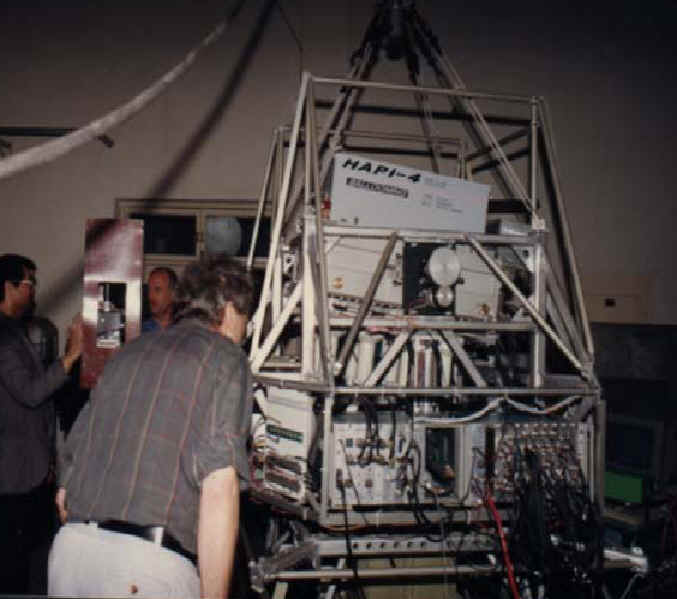Purpose of the flight and payload description
The HAPI-4 is a hard X-ray telescope which consists of a high pressure (3 atmospheres) Xe multi-wire proportional counter with an area of 1950 cm2 and a set of eight NaI(Tl)/Csi(Na) phoswich scintillators with an effective volume of 200 cm2 x 6 mm. The detector electronics and data acquisition system are based on an STD bus of a microcomputer and intelligent interfaces with one-chip processors. The design connects all the subsystems, including data, acquisition, housekeeping data, attitude control, telemetry and telecommand to work in a highly efficient way.
Details of the balloon flight
Balloon launched on: 9/25/1993
Launch site: Xiang He Balloon Launch Center, Hebei, China
Balloon launched by: Institute of High Energy Physics (IHEP)
Balloon manufacturer/size/composition: Zero Pressure Balloon 40.000 m3
End of flight (L for landing time, W for last contact, otherwise termination time): 9/25/1993
During this flight was observed the region of Cygnus, obtaining one image of the Cygnus X-1 X-Ray source. This was the first successful X-ray imaging observation in China.
External references
- Hard X-ray imaging with a slat collimated telescope Nuclear Instruments and Methods in Physics Research Section A: Accelerators, Spectrometers, Detectors and Associated Equipment, 362(2-3), 551
- Hard X-Ray Observation of CYG X-1 24th International Cosmic Ray Conference, Vol. 2, held August 28-September 8, 1995 in Rome, Italy
2270If you consider this website interesting or useful, you can help me to keep it up and running with a small donation to cover the operational costs. Just the equivalent of the price of a cup of coffee helps a lot.




